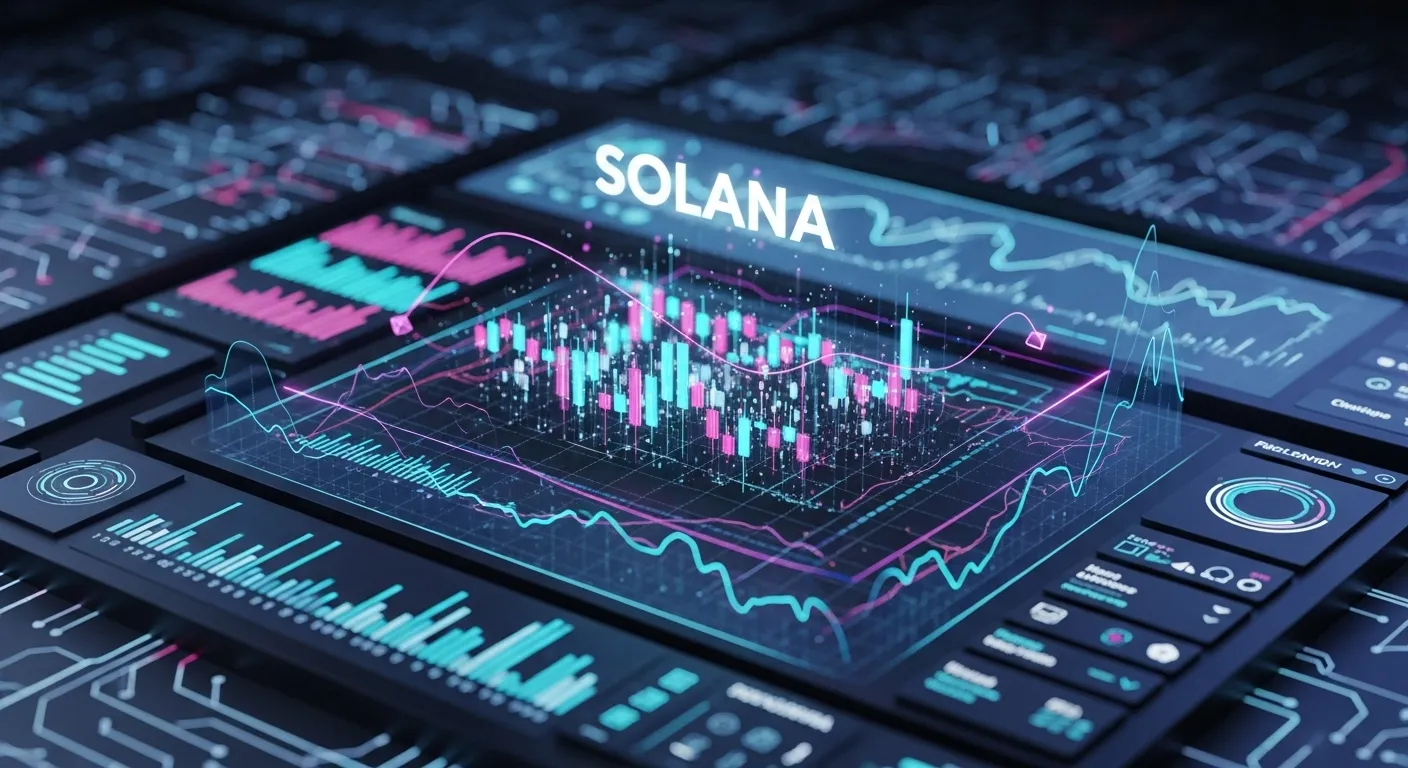My mornings aren't complete without peeking at the Solana chart it's become part of waking up. On September 20, 2025, SOL is fluctuating around $145, a number not far from summer highs yet not low enough to worry. But the question lingers: is this balance the setup for a fresh rally, or just a quiet interlude amid Solana's perennial network storms? I've always seen Solana as a speed demon in the blockchain world fast, innovative, but occasionally bumpy. To accurately assess the growth potential, it's essential to not only review the technical indicators but also to factor in the network's success in addressing its stability and sustainability challenges, which are key for institutional confidence.
Let's ease into support and resistance levels, as they're the backbone of any solid analysis. SOL's key support is right at 140 a spot where the price has sprung back lately, rallying buyers to accumulate. If it stands, an upward push looks likely. This 140 level is psychologically significant and also aligns with historical support levels. On the flip side, resistance at 150 works like a psychological barrier; breaching it could carry SOL to 160, though a stumble might drag it back for another support test. Funny how these round numbers shape market moods, isn't it? A decisive break above 150 should be confirmed by a surge in trading volume to have sufficient credibility to sustain the momentum towards 160. Any drop below 140 increases the probability of activating the next support at 135 (which intersects with the 200-day moving average).
We can't ignore the indicators, because without them, it's all guesswork in the fog. The RSI, Relative Strength Index, is at 60 now. It doesn't scream 'overbought!' or murmur 'buy low!' more like a quiet bullish nod. Analysts I follow often reckon RSI in the 55-65 range signals equilibrium with room for growth, especially for SOL tied to its unparalleled transaction speeds. This suggests the market has enough upward momentum to continue without being overheated and needing an immediate price correction. Furthermore, the MACD shows that the MACD line crossed the signal recently, and the histogram is positive usually meaning bulls are gaining ground. This shift hit about three days back, with volume ticking up, adding heft. Sure, in crypto's choppy seas, these signs can flip fast, so tread carefully. Moving averages count too: the 50-day Simple Moving Average (SMA) is at 142, and the 200-day is at 135, with the current price above both a classic mid-term bullish cue. This positioning above the key moving averages suggests a well-established uptrend in the larger timeframes.
Chart patterns? On the daily, a Bullish Flag is emerging, often hinting at the prior move's extension. Volume is up 9% last week, especially after upbeat DeFi news on Solana. This volume increase adds significant credence to the bullish flag pattern, suggesting the preceding move was strong and likely to continue after this consolidation period. The 4-hour chart shows the price probing an ascending trendline, and a hold could eye $148. But the 1-hour has those little jitters the kind scalpers love! This short-term volatility provides potential for high-frequency trading strategies but also carries inherent risks that demand swift risk management.
Digging deeper, SOL is up about 5% over the past month, a modest gain against 2021's wild rides. Pundits say this calm might be accumulation, particularly with network stability tweaks like the upcoming Firedancer upgrade. Fibonacci retracements spot neat levels: the 61.8% retracement from the recent dip is at 143, where the price has steadied. Holding that level significantly ups the odds of a run to 165 by year-end. This Fibonacci level acts as a strong support against potential drops, and maintaining it confirms the continuation of the upward momentum. Additionally, analyzing the On-Balance Volume (OBV) indicator shows it trending upwards, which suggests net money is flowing into the SOL market.
Of course, no take lacks risk. Network outages or Bitcoin slips can upend it all if BTC dips, SOL often joins the dance. But today's data feels like the winds are favoring the upside, at least for the moment. Investors must factor in these risks and be prepared should any signs of network stability erosion occur. The successful development and deployment of Firedancer is a critical fundamental factor factored into this technical analysis. The ability of Solana to deliver fast, low-cost transactions has made it an appealing platform for dApp developers and blockchain gaming, reinforcing long-term demand for SOL.
Timeframes tweak the tale. Daily: mildly bullish with decent support. Weekly: neutral yet promising, with a fundamental catalyst needed. Monthly: long-term up, fueled by NFT and DeFi uptake. Bollinger Bands are widening, suggesting more swings ahead likely positive ones. This widening in the Bollinger Bands, following a period of compression, is a classic signal for increased volatility, and given the upward direction of the other indicators, an upside breakout is more probable.
What always makes me ponder is that Solana isn't just a coin; it's a platform. From early speed boasts to scalability hurdles, its path's packed with lessons. Newbies forget patience rules; wait for support confirmations. Solana’s relentless focus on increasing throughput and reducing costs clearly establishes its position as a strong contender in the Layer-One space.
Medium-term, I bet if volume tops 2 billion, SOL tags 155. Below 140? The downside target is 130. Stochastic is at 65, a soft heads-up but not an immediate pressure. This technical analysis must be interpreted alongside the understanding of Solana's fundamental growth and ecosystem adoption. A decisive break above $150, confirmed by significant volume, would be the strongest signal to enter a long position.
Markets stay unpredictable, but charts boost your edge. This is September 20's view stay current. The simple takeaway: watch supports, and sync with the indicators. Solana, with its continued focus on increasing throughput and reducing costs, has clearly established its position as a strong contender in the Layer-One space. Risk management must be implemented at every step, including setting clear stop-losses, to maximize rewards.
